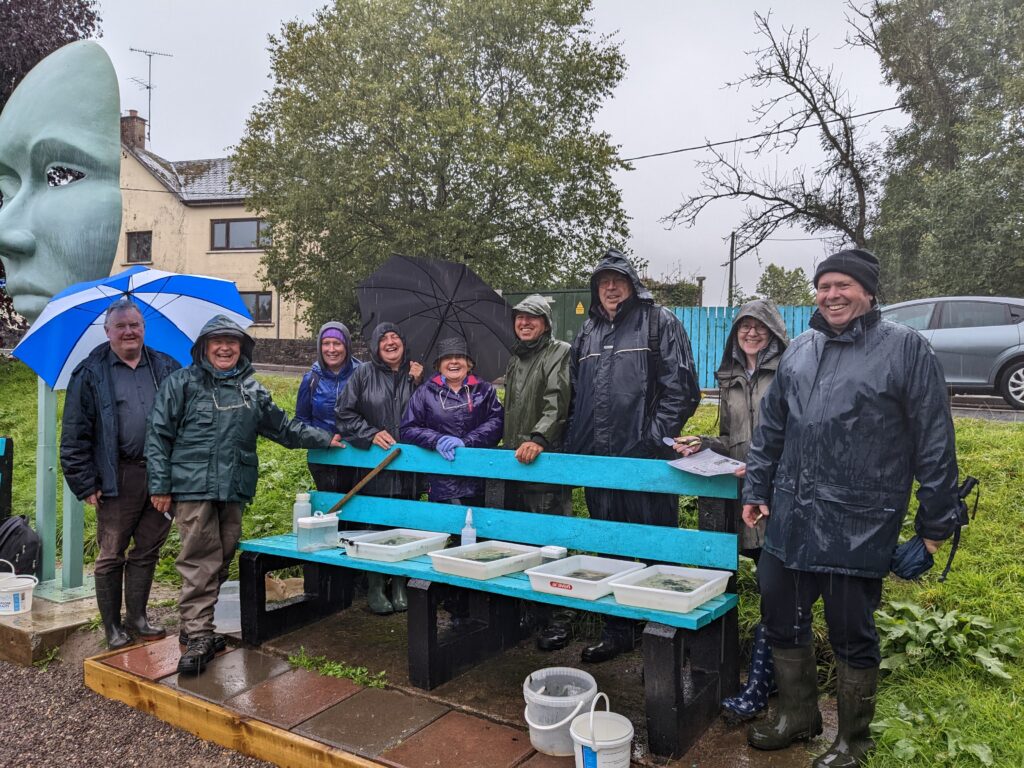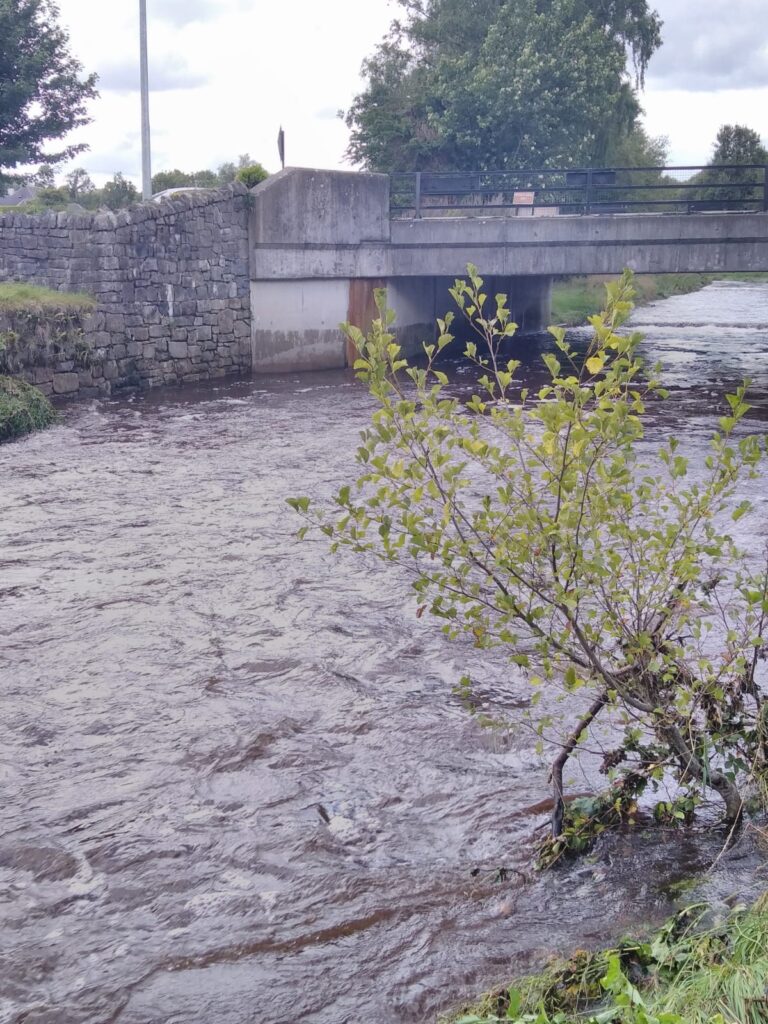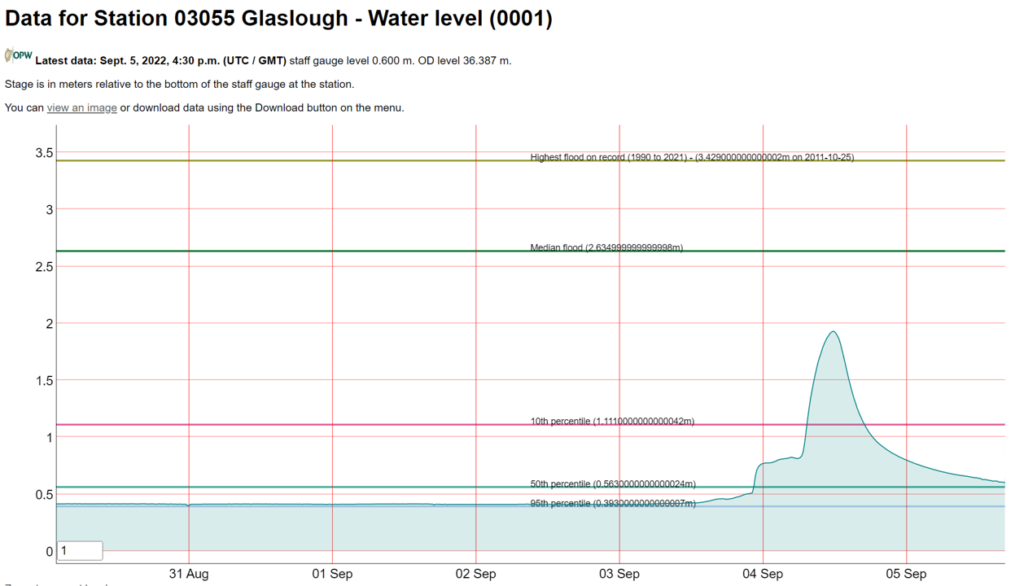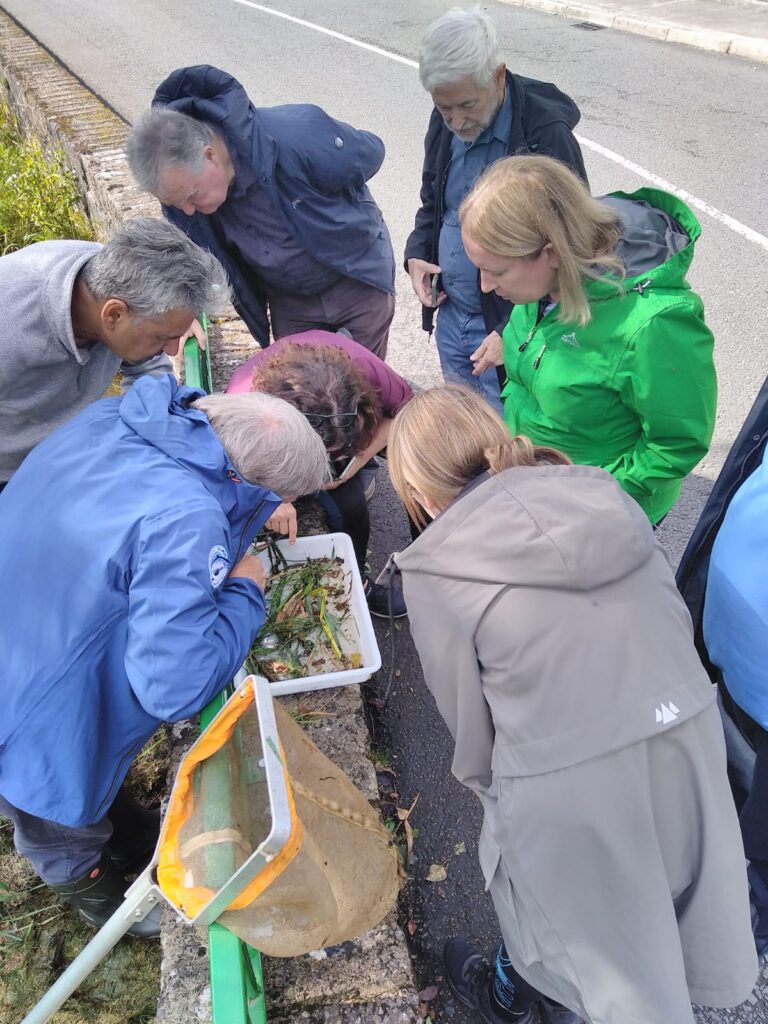

Saturday 3rd was a very rainy day (50 mm rain). We were very lucky, however, as the river was still extremely shallow after a long dry spell. The next day, Sunday 4th Sep was a completely different kettle of fish following the heavy rain. The Mountain River was torrential!


We followed the flood using the online waterlevel.ie website which provides real-time water levels.

On Saturday we took a series of ‘Kick Samples’ to collect a sample of the macroinvertebrates in the river. We applied the Citizen Science Stream Index to the samples and obtained a ‘Moderate’ score. The water quality was a little disappointing because the river had been rated as high status upstream of the town in 2021 by the EPA. Only a few flattened mayfly nymphs (Ecdyonurus) were noted with a few stoneflies (the Needle fly or Leuctra) and a single pupa of the caddis fly or sedge Rhyacophila in one sample – these are the pollution-sensitive invertebrates used in the CSSI scheme. Some mud snails and water hog louse were note on the pollution-tolerant side of the equation. Extensive algal cover following the long dry spell was also noted.
On Sunday the river was completely different and in flood. We saw grasses flattened on the bank and brash caught in the bankside alder trees that were well above the level we saw at 2:00 pm, indicating that the flood was now receding.



We took a riverside walk on Sunday afternoon up to the weir that controls the flow to Emy Lough via a canal. Ken explained what would be needed in order to allow migratory fish negotiate this weir, which was at least 2 m high – a few different options were possible but would have to be taken into account along with other weirs upstream and downstream.
The turbidity of the river and canal following the flood made it difficult to see the submerged plants but Ken fished a few out.


Martin identified a number of species – Branched Bur-Reed, Sparganium erectum, Starwort, Callitriche sp., Flag Irish, Iris Pseudacorus, Water plantain with large seed heads, Alisma (probably A. plantago aquatica). There were a few phone apps in use as well attempting to identify the plants using AI! The previous day we had lots of filamentous algae including a small amount of blanket weed, Cladophora, water felt algae, Vaucheria, but we also saw significant coverage of an unidentified green algae on Saturday before the flood – it is likely that most of this will have been washed away once the flood dies down. We also identified the moss Fontinalis antipyretica which is known as willow moss, greater water-moss, or common water moss.


The flow gauge at the weir upstream of Emyvale. We explained how flow gauges work and discussed fish passage options , foaming on rivers, ash die-back and riparian trees such as alder and willow.